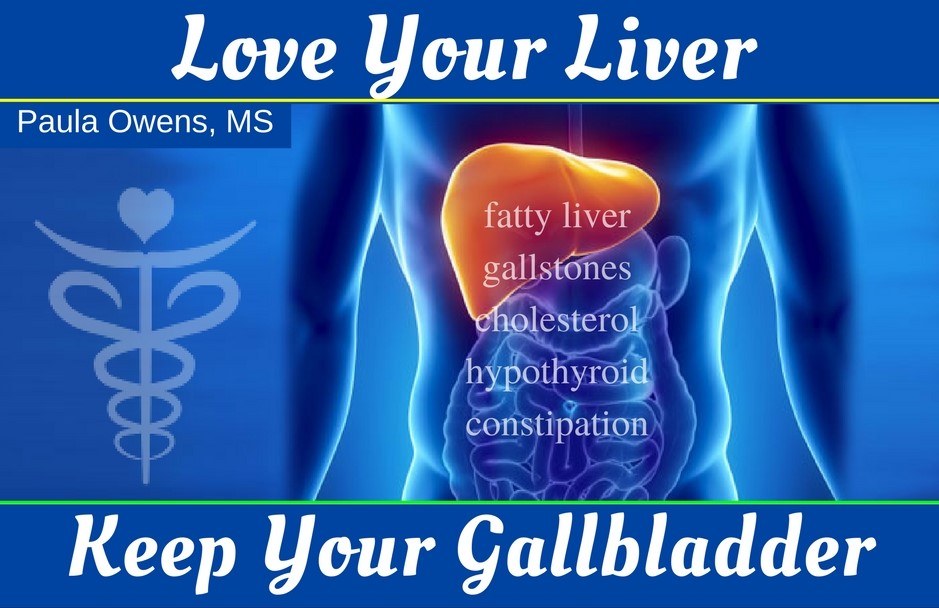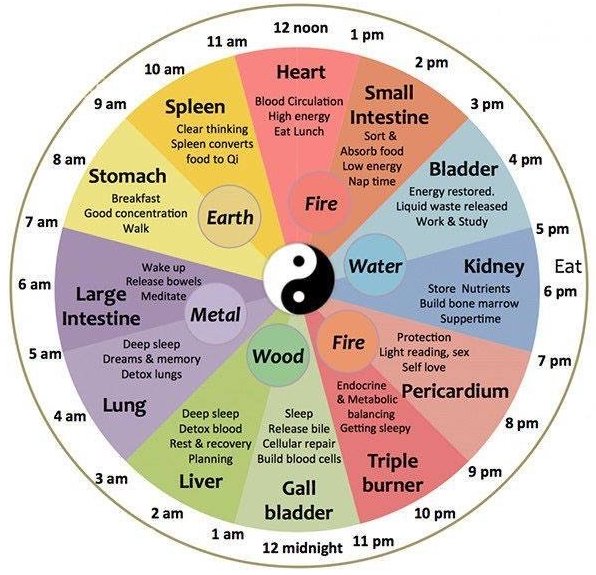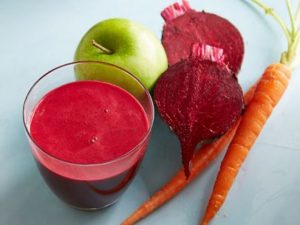Educating and Empowering You to Heal, Thrive, and Live a Happy, Healthy Lifestyle
Love Your Liver ♥ Keep Your Gallbladder Healthy
 Your liver performs over 500 functions including detoxification, excreting and burning fat, protein synthesis, and producing bile to aid in digestion and emulsifying fats. The liver filters, regulates and stores blood. It’s the storage site for many essential vitamins and minerals such as iron, copper, B12, vitamins A, D, E and K. The liver plays an important role in metabolism, digestion and healthy hormones, including the thyroid.
Your liver performs over 500 functions including detoxification, excreting and burning fat, protein synthesis, and producing bile to aid in digestion and emulsifying fats. The liver filters, regulates and stores blood. It’s the storage site for many essential vitamins and minerals such as iron, copper, B12, vitamins A, D, E and K. The liver plays an important role in metabolism, digestion and healthy hormones, including the thyroid.The gallbladder is a pear-shaped organ that is located directly beneath the liver. The gallbladder functions as storage place for bile, a fluid made by the liver that helps to digest fats. Bile is released from the gallbladder, and mixes in the stomach and intestines as food is broken down through digestion. The gallbladder functions to process cholesterol, clean all tissues, helps digest fats, and enhance brain function. The gallbladder’s job is dependent on a healthy functioning liver (it’s paired organ) ensuring a smooth flow of Qi (energy).
The Standard American Diet of fried foods, sugar, fructose, grains and processed junk foods cause bile to become saturated with cholesterol triggering cholesterol to form solid crystals, accumulating into gallstones. A sluggish, congested liver is often associated with gallstones.
Nearly 500,000 gallbladders are removed annually! Many doctors recommend gallbladder removal when gallstones are present, however please be informed: gallbladder removal comes with consequences and serious health complications can arise including brain fog, hormone imbalances, brittle hair, dry skin, several nutrient deficiencies, weight gain, loose stools, impaired digestion and more. Surgery is not a walk in the park either with 40% of post cholecystectomy patients still having symptoms of nausea, pain, gas, bloating, IBS, scarring, digestive problems, and food sensitivities and food intolerances afterwards. Once the gallbladder is removed, the ability to store bile in the gallbladder is lost, and bile continually flows through the bile ducts into the small intestine. The ability to emulsify, digest and absorb dietary fat is drastically reduced when the gallbladder is removed placing more stress on the liver.
99.9% of all gallbladder attacks are caused by food sensitivities.
Those with gallbladder dysfunction (including those who have have had their gallbladder removed) tend to have food sensitivities to eggs, casein, dairy, soy, onions, pork, wheat and gluten, and do best avoiding these items.
Traditional Chinese Medicine Clock

According to traditional Chinese medicine (TCM), specific organs have a two hour time period when the Qi (energy) is at its peak in that meridian.
The gallbladder meridian is most active between the hours of 11 p.m. and 1 a.m.
The liver meridian is most active between the hours of 1 a.m. and 3 a.m.
Consistently waking during these hours may be an indication that the gallbladder or liver is out of balance. When the energy of a meridian is not flowing well due to a block such as unhealthy eating, toxic overload or stress, you’ll experience a sign or symptom from the meridian(s) involved.
What Triggers Gallbladder Problems?
-
Diets high in sugar, wheat, grains, gluten, processed foods, omega-6 vegetable oils, hydrogenated fats, trans fats, fried foods, fructose corn syrup and dairy
-
Hormonal imbalances, specifically thyroid dysfunction and estrogen dominance.
-
Obesity, insulin resistance and type 2 diabetes
-
Hypochlorhydria (low stomach acid), congested, sticky bile, digestion problems and fat malabsorption, which results from faulty digestion and specifically from one or more of these three causes: liver congestion, poor quality congested bile, lack of pancreatic enzymes
-
Insufficient water intake (dehydration)
-
Lack of fiber from leafy greens, plants, fruits and vegetables
-
Unresolved soul wounds. Bottled-up and repressed emotions (anger, frustration, bitterness, hard thoughts, pride, resentment)
-
Crohn’s disease
Symptoms of Gallbladder Dysfunction and Sluggish Bile
- Pain or tenderness under right side of rib cage, pain between the shoulder blades, right shoulder pain, pain along the IT band (outer thigh area)
- Stools that float, light-colored or grey-colored stools, greasy or shiny stools
- Gas and bloating, belching or burping after taking a fish oil supplement
- Headaches
- Low stomach acid (hypochlorhydria)
- Bitter or metallic taste in the mouth
- Estrogen dominance
- Consistently waking between the hours of 11pm and 1am
- Constant runny nose (which can indicate a need for bile support)
- Constipation or loose stool
- Eye disorders, vision problems
- Hypothyroidism. If you don’t have enough bile or bile is sluggish, conversion of T4 (the inactive form of thyroid) to T3 (the active form of thyroid) is impaired. A 2016 study reported that thyroid dysfunction is more common among patients with gallstones, and it may be a risk factor for biliary stone formation.
Hypothyroidism is 7x more likely in people who experience reduced bile flow. –Finland study conducted at Tampere University Hospital
Is Your Liver Congested? Diabetes, viral infections of the liver (hepatitis), alcoholism, overeating, undernourished and malnourished, ongoing exposure to harmful chemicals, heavy metal toxicity, obesity, recreational, OTC and prescription drug use, consumption of fructose and trans fats, repressed anger, and chronic stress impact liver function.
As you can see from the lengthy list above, the healing protocol will vary depending on each individual’s unique biochemistry.
Non-alcoholic Fatty Liver Disease (NAFLD)
Nonalcoholic fatty liver disease (NAFLD) is the most common chronic liver disease in the U.S. One-third of the population suffers from NAFLD, and many are completely unaware of it. (Polyzos et al 2010, Schuppan et al 2010, Younossi 2008). It’s estimated that 70–80% of obese individuals have NAFLD.
NAFLD is a condition in which fat accumulates in the liver cells in individuals with minimal or zero alcohol intake. It often goes undetected for years, and may eventually progress to liver inflammation, cirrhosis, liver cancer or full-blown liver failure.
Risk factors for non-alcoholic fatty liver disease
- Processed carbs, fructose corn syrup, sugar, soda, fast food
- Underlying infections, gut dysbiosis
- OTC, prescription and recreational drug use
- Diabetes
- Chronic low-level inflammation
- Pregnancy
- Improper breathing, mouth breathing
- Ongoing stress
- Nutrient deficiencies
The liver is involved with digestion, the hormone system, blood sugar regulation, protein and fat metabolism. Many metabolic issues stem from liver dysfunction. When the liver becomes overloaded, congested and damaged, it’s ability to detox is compromised.
Symptoms and Conditions of a Congested Liver
- Hormonal imbalances: estrogen dominance, hypothyroid, insulin resistance
- Increased cholesterol
- Viral infections
- Gynectomastia
- Hypertension
- Deep vertical lines between the eye brows, dark circles or bags under the eyes
- Depression
- Chronic sinus infections, sinusitis
- Cellulite, distended stomach on a thin body, increased visceral (hard) fat
- Insomnia, consistently waking between 1am and 3am, nightmares
- Skin problems, hives, rashes, brown skin spots
- Alcoholism
- Chemical sensitivities, food sensitivities
- Heavy metal toxicity
- Gallbladder problems
- Chronic constipation
- Candida overgrowth
Emotional connection
If you wake up consistently during the night at the same time, or become exhausted at the same time every day in the afternoon, look at the meridian that’s active during that time.
The emotions that corresponds with the liver and gallbladder meridian include frustration, anger and resentment. Deep-seated anger increases risk of heart attack by 230 percent! (Mittleman et al, Circulation, 1995, vol 2). The liver is the most emotion sensitive organ and its weakness is often connected to emotional sensitivity.
The key responsibilities associated with the gallbladder and liver are decision making, determination and action. The liver controls ability to plan one’s life, while the gallbladder controls the capacity to make decisions.
Natural Remedies for a Healthy Liver & Gallbladder
Food is Medicine for a Healthy Liver & Gallbladder
- Nourish your liver with a liver-lovin’ smoothie: blend organic beets, apple, freshly squeezed lemon juice, carrots, bitter greens such as arugula, mustard greens or dandelion greens, ginger and turmeric. Add some form of
 protein (collagen peptide powder) and a healthy source of fat such as avocado, coconut cream or coconut oil, which will increase nutrient absorption.
protein (collagen peptide powder) and a healthy source of fat such as avocado, coconut cream or coconut oil, which will increase nutrient absorption. - Before meals, drink my apple cider vinegar and beet tonic: 1 cup filtered water, 2 tablespoons apple cider vinegar, one tablespoon organic beet extract, the juice from one fresh lemon, and a pinch of Celtic sea salt.
- Support your gallbladder with foods that stimulate the production and flow or bile and liver-cleansing foods: dandelion greens, bitter greens such as arugula, mustard greens and radicchio, and chlorophyll-rich plant foods, leafy greens, cruciferous veggies, artichoke, asparagus, apples, beets and beet greens, cilantro, turmeric, garlic, walnuts, olive oil, green tea, avocado, lemons and limes, tart cherries and sauerkraut
- Include more sulfur-rich foods: garlic, onions and eggs if you’re not sensitive to them
- Adequate protein from clean pasture-raised animals. Amino acids derive from protein-rich foods such as grass-fed meat, free-range pastured poultry and egg yolks are a primarily fuel source for the liver that metabolize amino acids to encourage detoxification.
- Include a diversity of nutrient-dense cruciferous veggies in the brassica family (broccoli, cauliflower, broccoli sprouts, mustard greens, kale, collards, cabbage and Brussel sprouts) in your diet to reduce circulating estrogens and help the liver get rid of accumulated toxins..
- Start your day with a cup of lemon or lime water. In a cup of water, add the juice of a fresh lemon or lime, a pinch of Celtic sea salt or Himalayan salt. Proper hydration is essential to liver health. The addition of fresh lemon or lime stabilizes blood sugar, creates an alkaline environment and supports healthy liver function.
- Protect your liver and enjoy your morning cup of organic coffee
- Sip on a cup of dandelion root tea, which is a natural liver tonic and a gentle diuretic that is high in potassium.
- Identify your personal food sensitivities (very common, especially in those with gallbladder problems)
- Avoid the typical offending poisons: high-fructose corn syrup, sugar, processed carbohydrates, trans-fats, vegetable oils, alcohol, soda and sugary fruit juices, GMOs, glyphosate, pasteurized dairy, gluten, wheat and all grains, processed, fake foods and artificial sweeteners
- Coconut oil is easily digestible and does not require the liver or gallbladder to digest or emulsify it. Other healthy fats such as olive oil, macadamia nut oil, organic butter, avocados, coconut butter and high-quality omega-3 fish oil help repair the liver.
- Those who consume at least 5 oz. of raw, organic nuts per week have a 25% lower risk of having a cholecystectomy compared with women who rarely or never ate nuts.
- Herbs and spices! Curcumin, the main active ingredient in turmeric supports healthy liver function.
Exercise tips for a Healthy Liver and Gallbladder
- Move your body every day to prevent stagnation and optimize healthy lymphatic function
- Increase vagal tone and strengthen the vagus nerve
- Yoga stimulates, regulates and enhances liver and gallbladder function through its combination of physical postures, breathing techniques and meditation.
- Practice, deep, slow breathing: inhale kindness, generosity, forgiveness and exhale anger, frustration and resentment while focusing on the color green and making the sound shhhhhh
Lifestyle tips for a Healthy Liver and Gallbladder
-
Keep your liver healthy with these smart and simple detox tips that are safe enough to do every day.
-
Sleep deprivation inhibits efficient fat metabolism and increased fat accumulation; predisposes the liver to oxidative stress, phospholipid damage and increases risk of fatty liver disease. As a society, so many are chronically sleep deprived and many underestimate the value of restful, uninterrupted sleep not only for a healthy functioning liver, but also for fat loss, hormone balance, healthy brain function, detoxification, mood and memory function, and overall health.
-
A healthy liver is responsible for the delicate balance of hormones, healthy thyroid function and correcting estrogen dominance.
-
Rule out underlying infections such as bacterial, fungal, yeast, Candida overgrowth, dysbiotic bacteria, mold and parasite infections
-
Consider the healing benefits of chiropractic, acupuncture and acupressure. Chiropractic care and spinal manipulation can help to increase bile flow. Stimulating certain reflex points can help normalize the flow of bile, even if your gallbladder has been removed. Stimulate and massage these areas daily: the web of skin between the thumb and index finger on the right hand, the bottom of the right foot in the mid-area is the reflex point for the small intestine and the rib cage on the right side.
-
Apply castor oil packs on right side of the upper abdomen for 30 minutes, two to three times per week.
-
Digital detox. Unplug and turn off electronics two hours before bedtime. Reduce exposure to EMFs. Spending a lot of time on the internet, smartphones, playing video games, texting and constantly checking email creates an agitation in our bodies that quickly causes liver stagnation.
-
Avoid Rx drugs, antacids, OTC drugs, anti-inflammatory and pain meds, which are toxic to the liver. Keep in mind: Acetaminophen (Tylenol) induced liver damage caused 54% and 16% of the cases of acute liver failure in the United Kingdom and United States, respectively.
-
Use natural skincare products or make your own with a few simple ingredients. The average woman puts several hundred chemicals on her body every day, which compromises the lymph and liver.
- Avoid NSAIDs, plastics, thermal receipts, pesticides and exposure to other chemicals as much as possible. Elevated liver enzymes (indicating liver cell damage) were found in those with elevated BPA levels and subject who took NSAIDs. Taking Tylenol after drinking alcohol is a deadly combo for the liver and the kidneys.
-
Rule out heavy metal toxicity
-
Rule out underlying viral infections such as Epstein-Barr, CMV, hepatitis, herpes and HPV.
-
Monitor liver function with annual blood tests to detect elevated values (AST, ALT, GGT as well as insulin, A1c, uric acid, triglycerides, iron, ferritin), digestion and immune markers.
-
Daily bowel movements are crucial for a healthy functioning liver and gallbladder. Constipation causes toxins to accumulate and stress the liver.
Chinese Medicine reminds us that the emotions related to an unhappy liver and gallbladder are anger, frustration, pride and resentment. Embrace and engage in a process of emotional healing.
Nutrient support for a Healthy Liver and Gallbladder
As with all nutritional support, it’s not a one-size-fits-all approach. Schedule a consultation to determine your personal protocol unique to your biochemistry.
-
Ox bile and bile support is especially beneficial for those who have trouble digesting fats, or have thick, sticky, congested bile or where the gallbladder has been removed.
-
Targeted nutritional therapy to support healthy liver detoxification
- Zinc, vitamin B6 and magnesium. The liver needs magnesium and B vitamins, particularly vitamin B6 to detoxify estrogen
- Phosphatidylcholine
-
Consider digestive enzymes, hydrochloric acid (HCL), bile support or pancreatic enzymes to support digestion
-
Probiotics at the end of your meal or before bedtime (do not take probiotics at the same time as HCL)
-
Essential fatty acids (Omega-3s). “If you have gallstones, 11gm/day of fish oil lowers cholesterol saturation of bile by 25%!” –Jonathan Wright, M.D.,
- Support your liver, reduce inflammation and oxidative stress: consider vitamin D, vitamin A, vitamin K, vitamin E, vitamin C, N-acetyl cysteine (NAC), alpha lipoic acid (R-ALA), folate and B vitamins, magnesium, zinc, selenium, calcium d glucarate, DIM, curcumin, resveratrol and EGCG (the major polyphenol of green tea)
Related Posts
- Video: Frequent Indigestion?
- Alcoholism, Nutrition and Nutrient Deficiencies
- Heavy Metal Toxicity
- Healing Power of Lemons
- Smart & Simple Detox Tips that are Safe Enough to do Every Day

